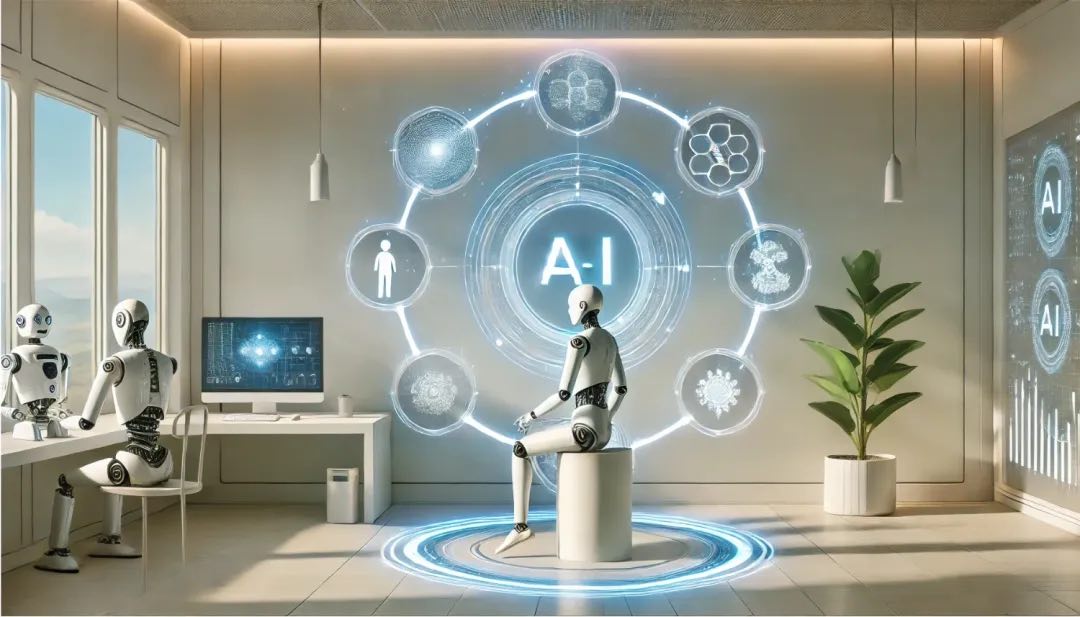For decades, Wall Street has prided itself on objectivity — on being guided by numbers, not narratives. But what if even the most sophisticated financial models are secretly biased?
Not biased in the political sense — but in ways that distort how investors perceive risk, value, and opportunity.
The truth is: every human-designed model carries the fingerprints of its creators — their assumptions, their blind spots, and sometimes even their overconfidence.
Enter AI agents — the new class of analytical systems capable of scanning financial data, patterns, and sentiment with zero emotional attachment. These digital analysts are exposing the flaws baked deep into Wall Street’s most trusted tools — and in doing so, they’re reshaping how markets are understood.
At Sagehood.ai, this is exactly what our AI agents are designed to uncover: the unseen biases hiding in the world’s most powerful financial models.
Wall Street’s Beautiful Illusion: Models That Think They Know Everything
Let’s start with a basic truth:
Every Wall Street model is a story — told through equations.
A discounted cash flow (DCF) model? That’s a story about what you believe a company’s growth will look like.
A quant model? A story about how past patterns will continue to matter.
A risk model? A story about which dangers you think are worth protecting against — and which you quietly ignore.
The problem isn’t that these models are wrong — it’s that they pretend to be objective while relying on subjective assumptions.
For instance:
- The discount rate in a DCF model might reflect optimism (bullish analysts) or caution (bearish analysts).
- Factor models assume “market efficiency,” but markets are rarely efficient — especially when driven by human emotion.
- Earnings forecasts rely on managerial guidance that may be strategically biased to please investors.
Wall Street’s best minds know this. But even they can’t escape cognitive bias. And that’s where AI stock analysisbegins to change the game.
How Artificial Intelligence in Finance Unmasks Bias
Artificial intelligence doesn’t get bored. It doesn’t hold a favorite stock. It doesn’t care about quarterly bonuses.
What it does do is observe — relentlessly.
When applied to financial markets, machine learning in investing works by analyzing vast, messy datasets: earnings reports, macro indicators, insider transactions, sentiment feeds, and price action. Unlike traditional models that rely on fixed parameters, AI investing tools adapt continuously.
That adaptability is key to identifying bias.
For example:
- When an analyst’s price target assumptions systematically overshoot reality, the AI notices.
- When a firm’s “risk-free rate” stays static even as the yield curve shifts, the AI flags inconsistency.
- When a momentum model stops working in high-volatility regimes, the AI recalibrates — humans often don’t.
AI doesn’t have to replace Wall Street models — it just audits them, revealing where human bias sneaks in.
The 5 Hidden Biases Lurking in Traditional Models
Our Sagehood AI agents have identified recurring bias patterns across historical market data and institutional frameworks. Let’s unpack five of the biggest ones:
1. Recency Bias: The Illusion of “It Worked Yesterday”
Traditional quant models often overfit recent trends.
They assume that what worked last quarter — say, “AI infrastructure stocks outperform” — will keep working indefinitely.
Sagehood’s Technical Trader Agent and Valuation Projection Agent spot this instantly.
By analyzing longer timeframes, they identify when market behavior deviates from recent history — signaling that a model may be relying too heavily on yesterday’s success stories.
For example, when AI trading platforms began overvaluing semiconductor stocks purely due to hype, Sagehood’s agents flagged a divergence between price action and true earnings growth.
That’s not pessimism — it’s pattern recognition beyond human bias.
2. Confirmation Bias: Seeing Only What You Want to See
Analysts are human. When they believe in a company’s potential, they unconsciously seek data that supports their thesis.
A model may weigh bullish scenarios more heavily or dismiss bearish signals as “noise.”
Sagehood’s Financial Analyst Agent combats this by cross-verifying fundamentals from multiple sources: SEC filings, credit ratings, and even alternative data like satellite shipment trends.
When sentiment and fundamentals don’t align, the system challenges the bias instead of reinforcing it.
AI-powered systems don’t fall in love with their own predictions — they only fall in love with accuracy.
3. Survivorship Bias: Ignoring the Dead
Most Wall Street backtests analyze companies that survived.
But what about the thousands that didn’t? Models built only on winners paint an overly optimistic picture.
The Sagehood AI agents incorporate “ghost data” — delisted or bankrupt companies — to understand what failure looks like.
That’s crucial in AI stock analysis, because it prevents overconfidence during bull cycles.
For instance, by analyzing patterns from 2000 (dot-com bust) and 2008 (financial crisis), the agents recognize early warning signals — like rising debt-to-equity ratios or collapsing cash flow margins — long before retail traders notice.
4. Herding Bias: When Everyone Copies Everyone
Investment banks often copy valuation multiples from peers.
If Goldman sets a 25x forward P/E for Nvidia, others soon follow. This creates herd-based modeling — not true valuation.
The Valuation Projection Agent at Sagehood runs independent AI-driven projections, using machine learning in investing to estimate intrinsic value from bottom-up fundamentals, not peer consensus.
It might say: “Actually, Nvidia’s fair multiple under current rate conditions is 17x, not 25x.”
That independence helps investors escape Wall Street echo chambers — a key reason AI-powered stock picksoutperform herd predictions.
5. Overconfidence Bias: The Model Thinks It’s Smarter Than the Market
One of the deadliest biases: assuming your model captures all variables.
But macro shocks — pandemics, wars, black swan events — rewrite the rules overnight.
Sagehood’s News Agent and Macro Intelligence Agent continuously scan global data feeds to test whether existing assumptions still hold true.
When they detect new correlations (e.g., commodity spikes altering tech margins), they instantly alert the Strategy Agent to update its view.
Humans hesitate to admit uncertainty.
AI doesn’t.
That’s why AI investing tools outperform static models — they thrive on revision.
Real-World Example: How AI Caught Wall Street Sleeping
In 2023–2024, Wall Street models predicted that rising rates would crush tech stocks.
That was textbook economics — higher discount rates = lower valuations.
But Sagehood’s AI agents noticed something unusual:
While rates rose, the earnings revisions for AI-related infrastructure companies were accelerating.
The models on Wall Street didn’t account for that structural productivity boost — they were anchored to old cause-effect logic.
Result?
- Many analysts downgraded names like $NVDA and $SMCI.
- AI agents saw through the noise, identifying true earnings expansion masked by macro fear.
- Investors using Sagehood’s insights caught the early surge — turning “uncertainty” into alpha.
That’s the power of how AI reads the market — by detecting when traditional logic breaks down.
Why Bias Is a Data Problem, Not a Human Problem
At its core, bias exists because models are trained on limited data.
If you feed a model data from stable bull markets, it assumes the future will look the same.
If you omit emotional data — like social sentiment — it underestimates investor behavior.
That’s why Sagehood AI agents integrate multimodal intelligence:
- Financial data (balance sheets, earnings)
- Market data (price action, volatility)
- Sentiment data (social media and news)
- Macro data (interest rates, inflation, commodities)
- Behavioral data (investor positioning, flow patterns)
By merging these, AI identifies when numbers stop telling the full story.
For example: if fundamentals are solid but social sentiment collapses, the model infers opportunity — contrarian alpha.
That’s how AI transforms artificial intelligence in finance into real intelligence in markets.
The Role of Sagehood: Bias Detection as a Service
At Sagehood.ai, we’ve built a system where AI investing agents collaborate like a multi-disciplinary think tank — constantly questioning, challenging, and validating each other’s conclusions.
Here’s how the process works:
- Financial Analyst Agent builds a baseline valuation.
- Technical Trader Agent tests it against trend data.
- Social Media Buzz Agent checks for sentiment distortion.
- News Agent monitors for external catalysts or risks.
- Valuation Projection Agent rebalances assumptions using machine learning.
If all five agents agree, the stock becomes a validated AI-powered pick.
If they disagree — that’s where the bias likely hides.
This internal “debate” is what makes Sagehood AI agents unique among AI trading platforms — they don’t just predict, they argue intelligently until bias is minimized.
Why Wall Street Should Listen to the Machines
Wall Street has decades of experience — but experience itself can be a bias.
It trains people to trust their pattern recognition, even when the world changes.
AI systems, especially those built for investing, are free from that weight of history.
They don’t assume “tech always leads” or “rates always hurt growth.”
They test everything, every day, on fresh data.
That’s why we believe the future investor won’t rely solely on human advisors or old quant formulas — they’ll rely on AI investing advisors that detect both market bias and human bias.
🧭 The Future: Bias-Aware Investing
The next evolution of AI stock analysis isn’t about making faster predictions — it’s about making fairer ones.
By exposing cognitive and structural biases, AI allows investors to see markets as they really are — not as they’re modeled to be.
Imagine a platform that could whisper:
“This model is too optimistic.”
“This forecast ignores liquidity risk.”
“This sentiment spike is emotional, not rational.”
That’s where Sagehood’s AI investing tools are heading — toward a world where transparency and precision coexist.
Key Takeaways
✅ Wall Street models aren’t neutral — they reflect human assumptions.
✅ Bias can distort everything from valuations to risk profiles.
✅ AI agents can detect bias patterns across data, sentiment, and macro conditions.
✅ Sagehood AI agents collaborate to cross-check and remove those distortions.
✅ The result: cleaner insights, sharper entries, smarter exits.
Conclusion: The End of Blind Models
In a world drowning in data, the only true edge is clarity.
That’s what Sagehood.ai delivers — clarity that reveals where bias hides, where sentiment lies, and where the truth of value actually lives.
Because while Wall Street’s models might still tell stories, AI agents read the subtext.
And that’s where the alpha is found.


